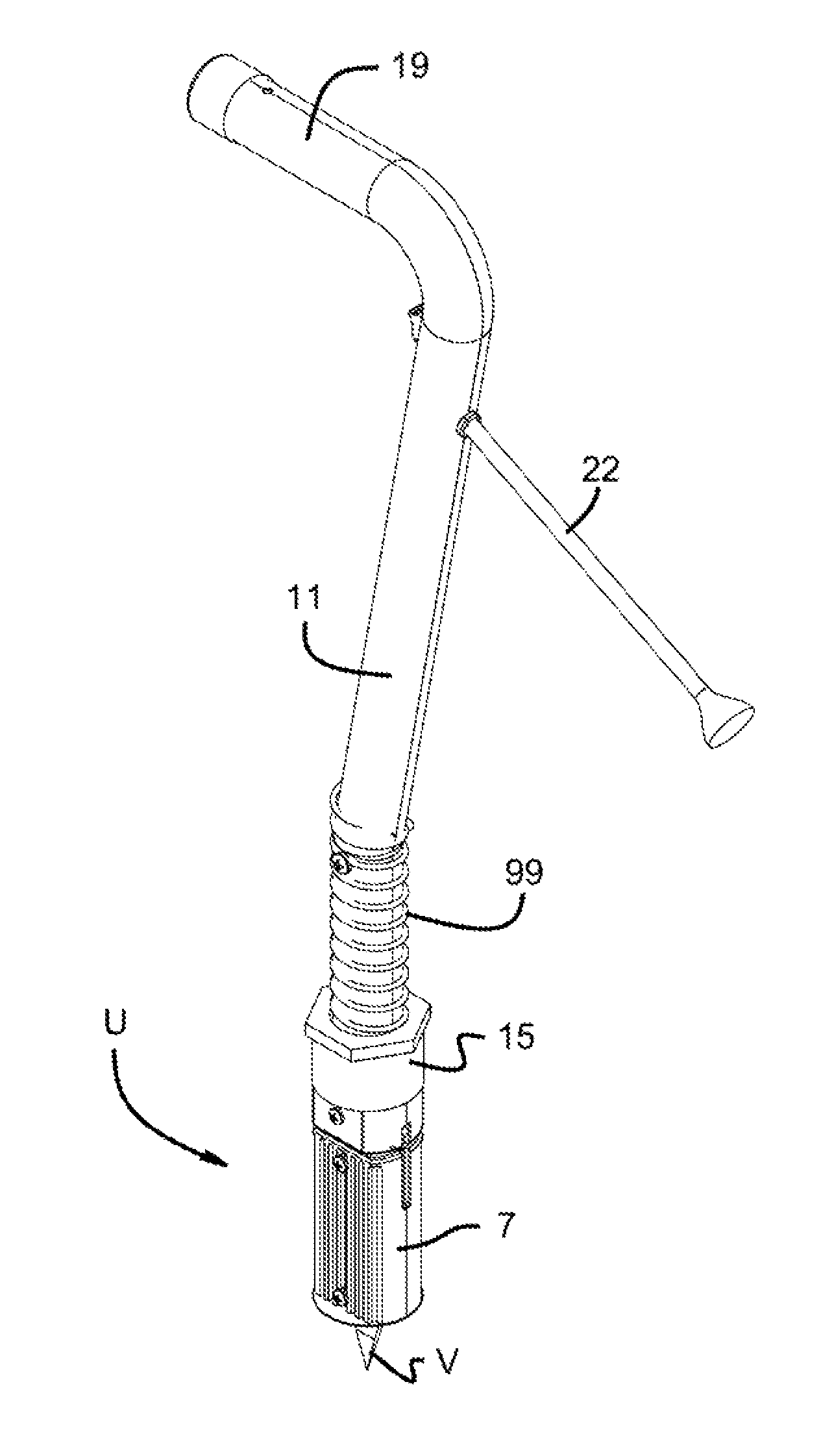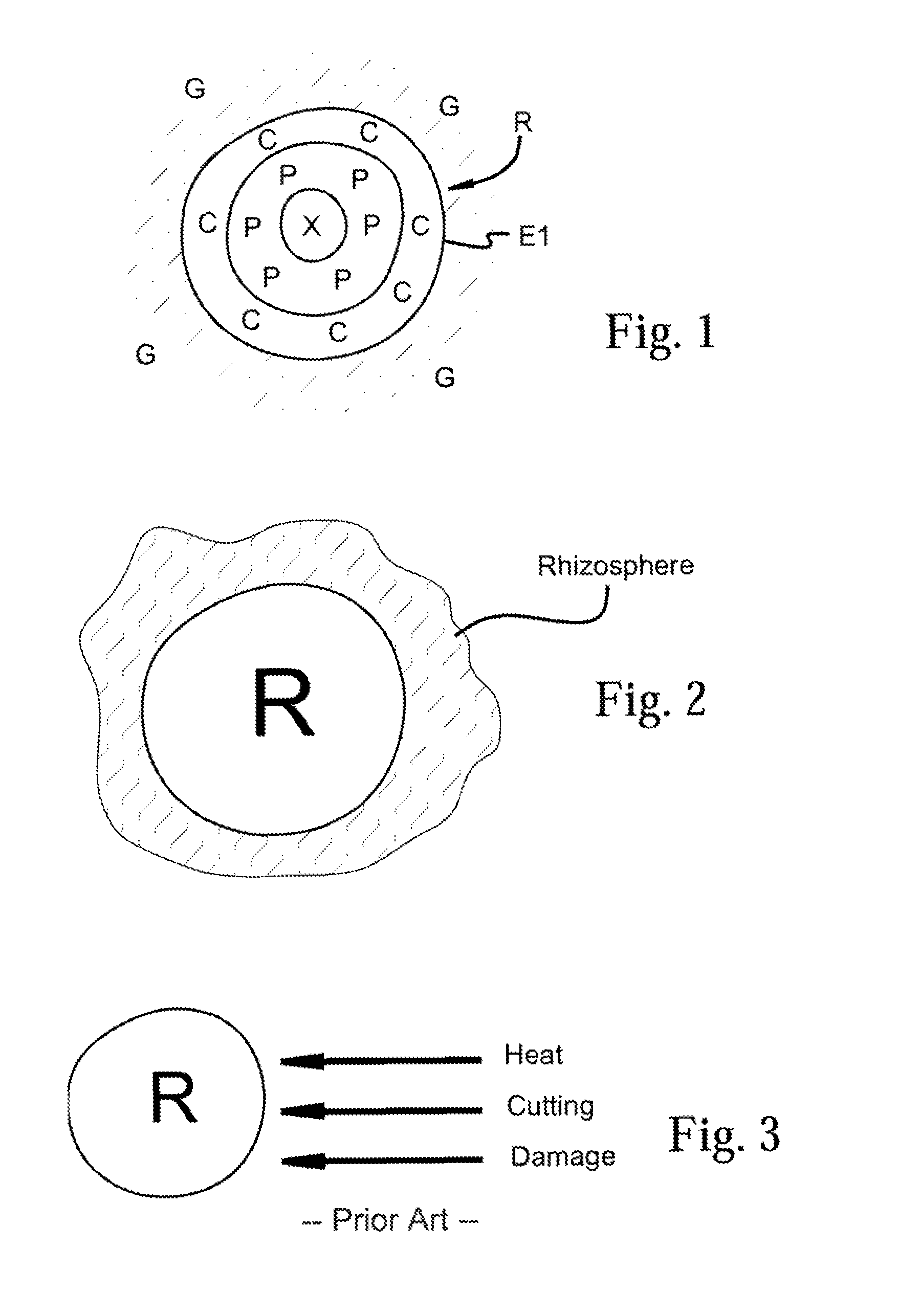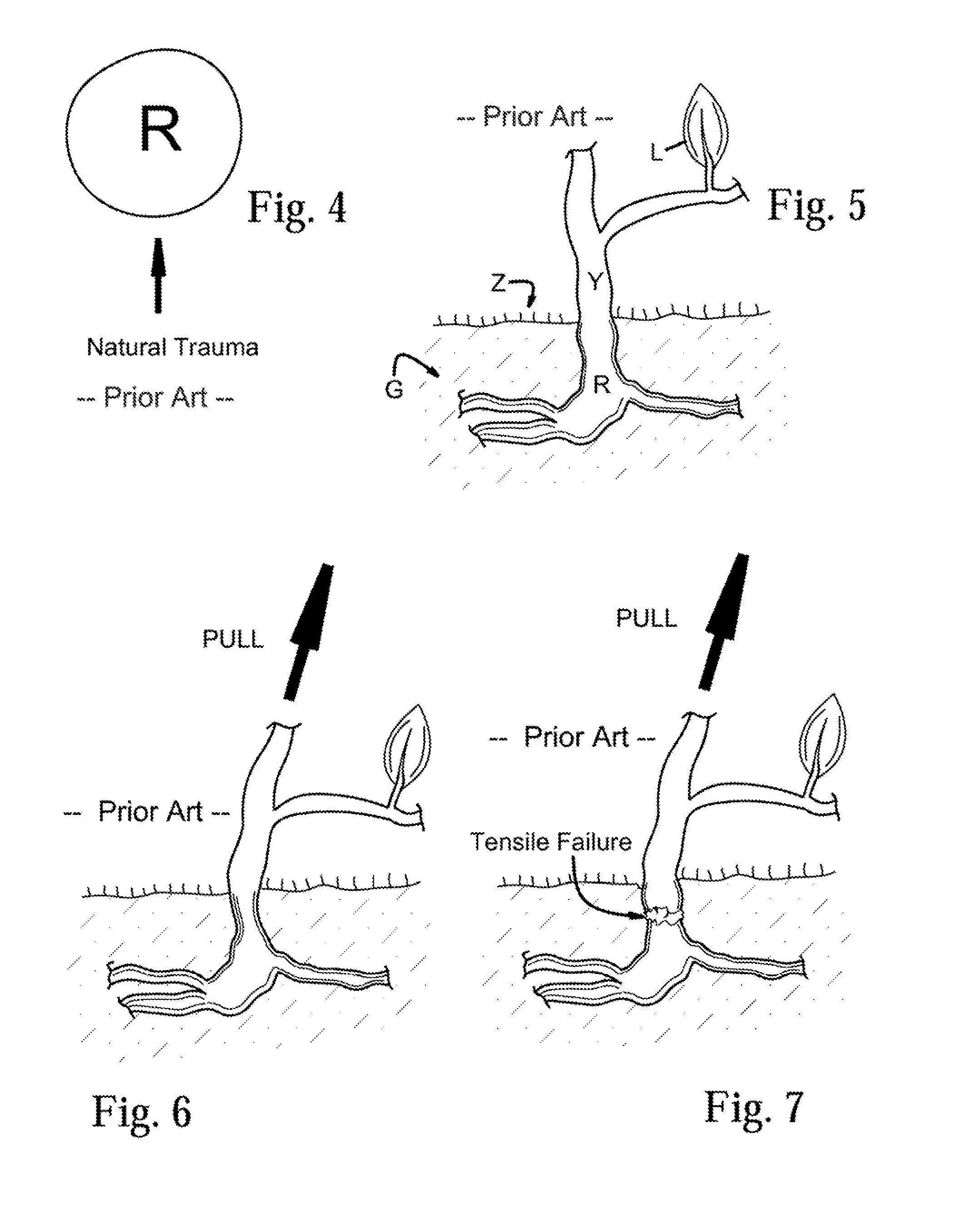Plant eradication using unnatural mechanical and thermal trauma
a technology of mechanical and thermal trauma and plant eradication, which is applied in the direction of insect catchers and killers, thinning machines, agriculture tools and machines, etc., can solve the problems of disrupting the normal collective behavior of rhizosphere microorganisms, and achieve the effect of greater effectiveness
- Summary
- Abstract
- Description
- Claims
- Application Information
AI Technical Summary
Benefits of technology
Problems solved by technology
Method used
Image
Examples
Embodiment Construction
[0074]Now referring to FIG. 22, a partial cross-sectional view, partial surface view of a hot stab plant or weed eradicator according to the invention is shown. The hot stab plant eradicator features a user pole 11 mechanically affixed to a stab unit U. User pole 11 incorporates or attached to a user handle 19, and can also allow entry of an electrical or other line cord 22 as shown. User pole 11 has a spring 99 attached thereto, or incorporated therein, whose function is to maintain a downward bias on a shroud 7 that is part of stab unit U.
[0075]FIG. 23 shows a view similar to that of FIG. 22, but showing internal structure of the stab unit U and user pole 11. Inside stab unit U as shown, there is a stab knife V, a flat acuate V-shaped rigid, thermally conductive member, residing inside shroud 7 when shroud 7 is not pushed upward against bias of spring 99. Stab knife V is in thermal communication with heater H as shown. Heater H can be unified with stab knife V as shown, or can be ...
PUM
 Login to View More
Login to View More Abstract
Description
Claims
Application Information
 Login to View More
Login to View More - R&D
- Intellectual Property
- Life Sciences
- Materials
- Tech Scout
- Unparalleled Data Quality
- Higher Quality Content
- 60% Fewer Hallucinations
Browse by: Latest US Patents, China's latest patents, Technical Efficacy Thesaurus, Application Domain, Technology Topic, Popular Technical Reports.
© 2025 PatSnap. All rights reserved.Legal|Privacy policy|Modern Slavery Act Transparency Statement|Sitemap|About US| Contact US: help@patsnap.com



